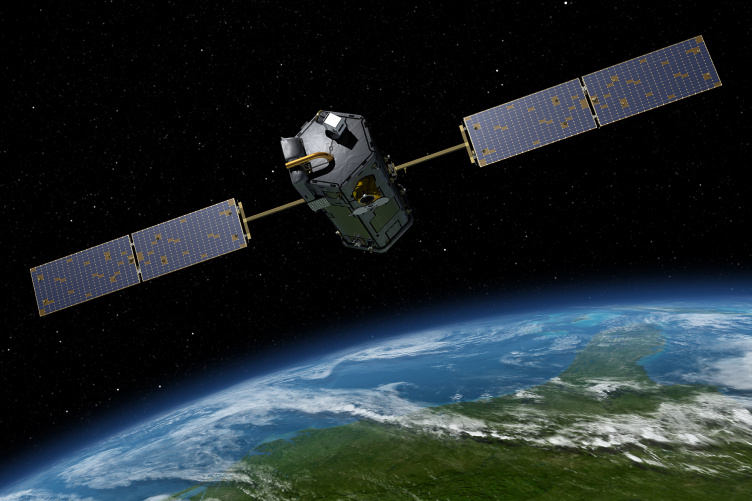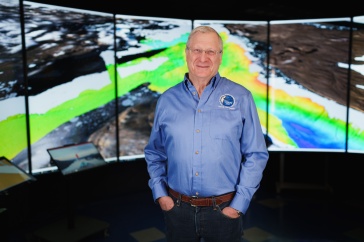
Artist rendering of OCO-2 satellite used in the UNH research that measured the plant “glow”, or solar-induced fluorescence (SIF), produced during photosynthesis from different areas around the globe. (Image: NASA/JPL-CalTech)
Whether you’re in a forest, a soybean field, or a prairie, the plants that grow there take up carbon dioxide during photosynthesis. They also emit an energy “glow” that can be detected by an orbiting satellite. Now in a first-of-its-kind global analysis of these satellite data, researchers from the University of New Hampshire have linked that plant energy glow with photosynthesis across all major land-based ecosystems, which will provide more accurate data for scientists who are modeling the carbon cycle and projecting climate change.
“These research results will make it possible to monitor plant photosynthesis in a near real-time fashion solely based on satellite observations using a very simple, reliable, and computationally fast approach,” explains Jingfeng Xiao, UNH research associate professor of remote sensing and modeling of terrestrial ecosystems and carbon cycle. Xiao is a co-author and the principal investigator on this study that was recently published in the journal Global Change Biology.
Plants across the globe are a major carbon sink — that is, they help to remove carbon from the atmosphere during photosynthesis. Because of this, accurate photosynthesis estimates are crucial for scientists who examine ecosystem functions, carbon cycling, and feedbacks to the climate. The problem is that it’s somewhat difficult to get a good handle on global photosynthesis. Scientists have previously used all sorts of data to estimate it, including air temperature, solar radiation, precipitation, and a host of other information used in computer-based Earth systems models that focus on the carbon cycle. However, the resulting calculations can have large variations that then affect the simulations of the carbon cycle and carbon-climate feedback.
“This is a big step towards sole reliance on satellite data, which will reduce uncertainty in the data and could reduce computational costs because it’s a very simple model.”
So in hopes of finding an easier method to more accurately calculate photosynthesis, scientists have recently begun to measure the plant’s energy glow, called solar-induced fluorescence (SIF), which is a leaf’s emittance of light that is at the high end of the visible spectrum and that the human eye cannot see. SIF data are recorded by a satellite, called the Orbiting Carbon Observatory-2 (OCO-2) as it passes over the Earth in orbit.
Scientists have previously compared SIF with their on-the-ground photosynthesis estimates on a smaller scale — within one type of ecosystem or across a few — and have found a direct relationship between the two; when there’s more SIF, the plants take up more carbon from photosynthesis, and vice versa. Xiao’s research establishes this direct universal relationship across eight major ecosystem types across the Earth and shows that SIF can indeed serve as a proxy for more time-intensive calculations.
“This is a big step towards sole reliance on satellite data, which will reduce uncertainty in the data and could reduce computational costs because it’s a very simple model,” Xiao says.
This is the first global analysis based on SIF observations from the OCO-2, Xiao explains. In addition, the direct universal relationship revealed in this study allows the estimation of photosynthesis without knowing the ecosystem type. This is especially important for areas of the globe where the satellite might not have reliable, fine-scale data on the vegetation type. Xiao is currently working on developing global SIF estimates for areas ranging on the scale of a few to tens of square kilometers, which he says will be useful for the scientific community studying these topics.
This project was supported by the National Aeronautics and Space Administration’s Carbon Cycle Science Program and Climate Indicators and Data Products for Future National Climate Assessments, the National Science Foundation’s MacroSystems Biology Program, and the Iola Hubbard Climate Change Endowment.
-
Written By:
Rebecca Irelan | Institute for the Study of Earth, Oceans, and Space | rebecca.irelan@unh.edu | 603-862-0990

















































